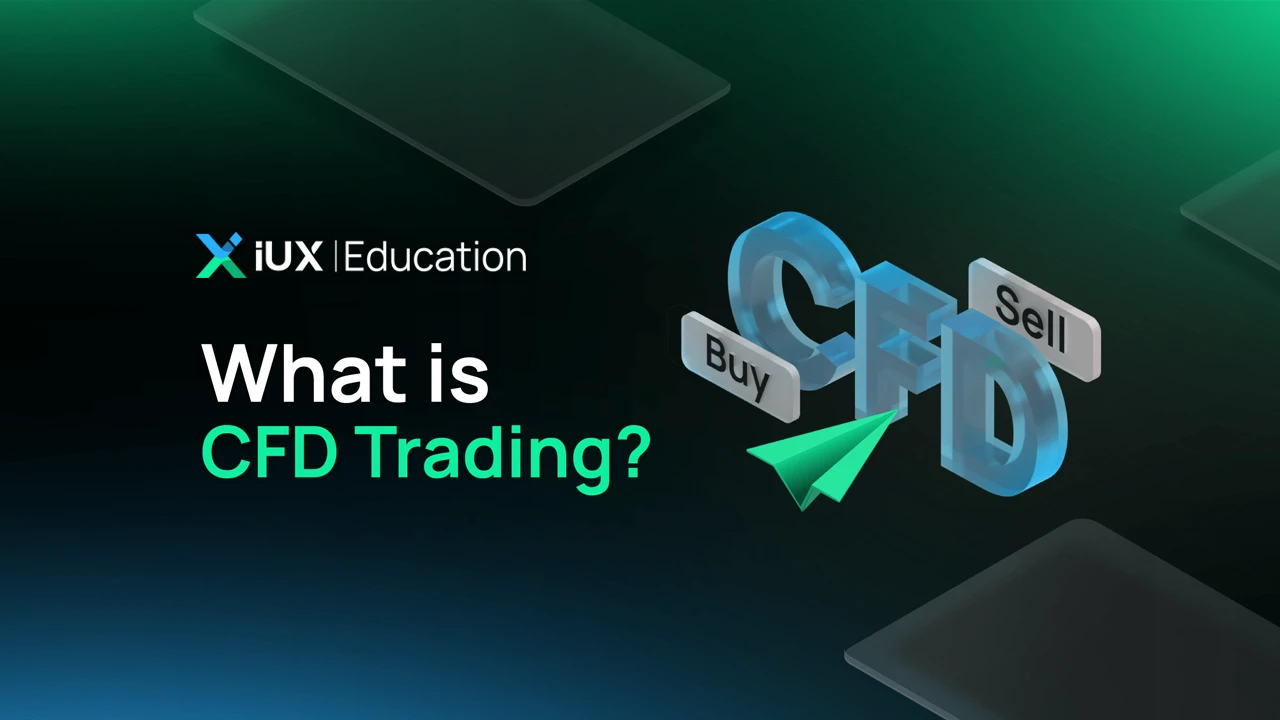
CFD: ¿Qué es el Trading de CFDs?
Qué es el Trading de CFDs y cómo comenzar a operar en IUX con MetaTrader?
¿Alguna vez has pensado en invertir en los mercados financieros sin poseer los activos directamente? Entonces, los Contratos por Diferencia (CFDs) pueden ser lo que estás buscando. Este artículo explora el mundo del trading de CFDs, profundizando en sus conceptos básicos, el rol de IUX como broker y las ventajas de utilizar plataformas MetaTrader para tus operaciones.
| Punto Clave |
El trading de CFDs ofrece flexibilidad y el potencial para obtener altos rendimientos, aunque también conlleva riesgos significativos. Plataformas como IUX y MetaTrader brindan las herramientas y recursos necesarios para que tanto los traders principiantes como los experimentados puedan tener éxito. Siempre recuerda utilizar estrategias de gestión de riesgos para proteger tu capital.
¿Qué es el Trading de CFDs?
El trading de CFDs, o contratos por diferencia, es una forma popular de participar en los mercados financieros. Permite a los traders especular sobre los movimientos de precios de diversos activos, incluyendo acciones, materias primas y forex, sin poseer el activo subyacente. Imagina que crees que el precio de una acción va a subir. Con un CFD, puedes ingresar en un contrato que refleja esa predicción. Si el precio sube, puedes obtener una ganancia. Si baja, podrías perder dinero. Plataformas como IUX, integradas en MetaTrader, ofrecen herramientas sólidas para facilitar el trading de CFDs.
¿Cómo Funciona el Trading de CFDs?
El trading de CFDs implica un acuerdo con un broker para intercambiar la diferencia en el precio de un activo subyacente desde el momento en que se abre el contrato hasta que se cierra. Esto significa, en esencia, que estás especulando sobre el movimiento de precios del activo sin poseerlo realmente.
-
Posición Larga (Compra):
Si crees que el precio del activo aumentará, puedes optar por una posición larga (compra) de un CFD. Si el precio sube, obtendrás una ganancia. Si baja, perderás dinero.
-
Posición Corta (Venta):
Por el contrario, si piensas que el precio del activo disminuirá, puedes optar por una posición corta (venta) de un CFD. Si el precio baja, obtendrás una ganancia. Si sube, perderás dinero.
Tu ganancia o pérdida depende de la diferencia entre el precio al que entraste (abriste la posición) y el precio al que sales (cerraste la posición).
Beneficios del Trading de CFDs
-
-
Accesibilidad: Los CFDs permiten acceder a una gama más amplia de mercados en comparación con la inversión tradicional, incluyendo acciones, forex, materias primas e índices.
-
-
-
Apalancamiento: Los CFDs permiten a los traders usar apalancamiento, lo que significa que puedes abrir posiciones más grandes con una cantidad menor de capital. Esto puede amplificar las ganancias, pero también aumenta el riesgo.
-
Acceso a Mercados Diversificados: Opera en una variedad de mercados desde una sola plataforma, como IUX.
-
Flexibilidad: Puedes optar por posiciones largas (compra) o cortas (venta) en CFDs, lo que te permite beneficiarte de precios tanto en alza como en baja.
-
Además, los beneficios de operar con CFDs son numerosos. Descúbrelos con IUX, donde todos los mercados están al alcance de tu mano. Opera con una variedad de activos en un solo lugar, incluyendo acciones, divisas, criptomonedas y materias primas. Con altos niveles de apalancamiento, puedes maximizar tus oportunidades de ganancia y beneficiarte tanto en mercados alcistas como bajistas. Incrementa la diversidad y la flexibilidad, distribuyendo riesgos y beneficios en todas tus inversiones. Experimenta un trading superior y eleva tu potencial de trading e inversión con nosotros hoy en IUX.
Conclusión
El trading de CFDs es una forma versátil y accesible de operar en los mercados financieros. Utilizando plataformas como MetaTrader e IUX, los traders pueden aprovechar los movimientos del mercado sin poseer los activos subyacentes. Sin embargo, es esencial comprender los riesgos asociados y operar con responsabilidad. Con el conocimiento y las herramientas adecuadas, el trading de CFDs puede ser una actividad rentable.
Recuerda, la investigación y una estrategia de trading bien definida son claves para el éxito.


